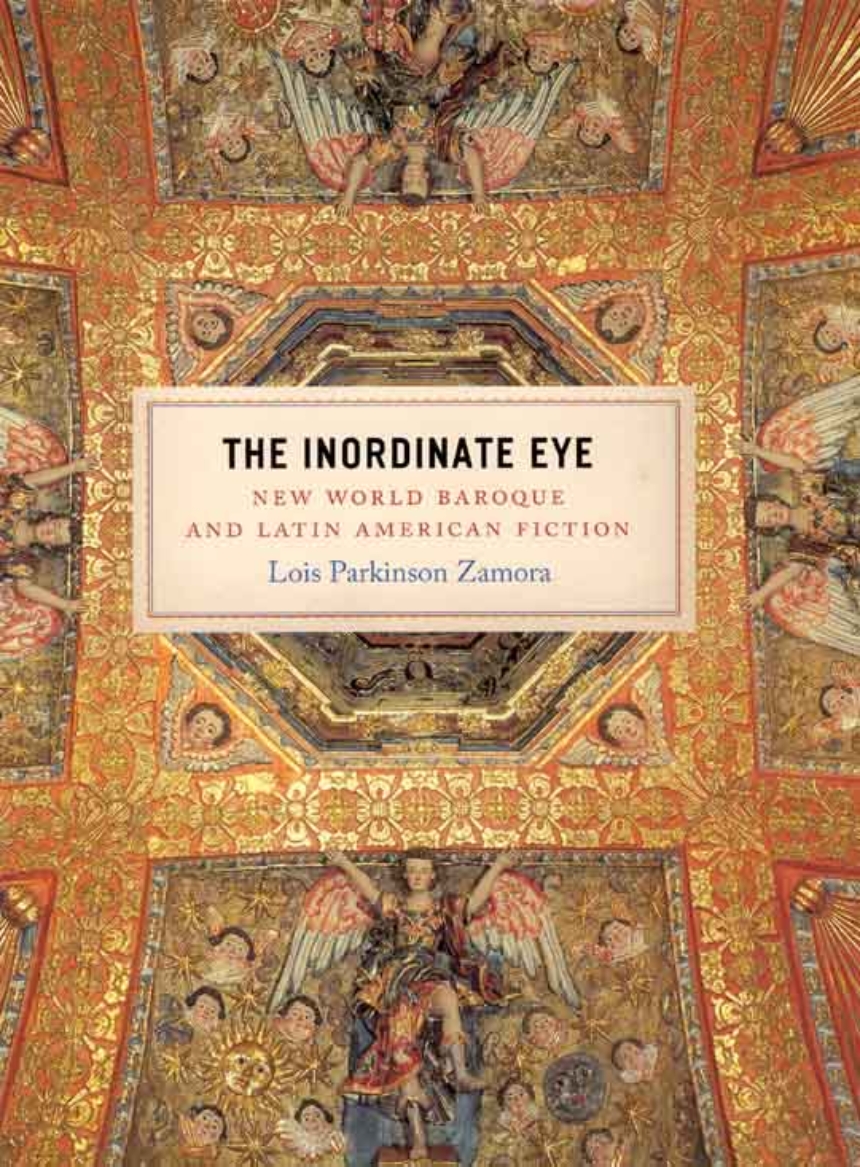The Inordinate Eye
New World Baroque and Latin American Fiction
The New World Baroque combines indigenous, African, and European forms of expression, and, in the early decades of the twentieth century, Latin American writers began to recuperate its visual structures to construct an alternative account of modernity, using its hybrid forms for the purpose of creating a discourse of “counterconquest”—a postcolonial self-definition aimed at disrupting entrenched power structures, perceptual categories, and literary forms.
Zamora engages this process, discussing a wide range of visual forms—Baroque façades and altarpieces, portraits of saints and martyrs (including the self-portraits of Frida Kahlo), murals from indigenous artisans to Diego Rivera—to elucidate works of fiction by Borges, Carpentier, Lezama Lima, Sarduy, Garro, García Márquez, and Galeano, and also to establish a critical perspective external to their work. Because visual media are “other” to the verbal economy of modern fiction, they serve these writers (and their readers) as oblique means by which to position their fiction culturally, politically, and aesthetically.
The first study of its kind in scope and ambition, The Inordinate Eye departs radically from most studies of literature by demonstrating how transcultural conceptions of the visual image have conditioned present ways of seeing and reading in Latin America.
424 pages | 23 color plates, 85 halftones | 7 x 10 | © 2006
Art: American Art
History: Latin American History
Literature and Literary Criticism: American and Canadian Literature
Reviews
Table of Contents
List of Illustrations
Preface: Coatlicue Transformed
Acknowledgments
Chapter 1
Quetzalcóatl’s Mirror and Guadalupe’s Eye: Syncretism and Seeing
Chapter 2
Prehispanic Codices, Murals, and Historical Display: Rivera, Garro, Galeano, and Ibargüengoitia
Chapter 3
New World Baroque and the Dynamics of Displacement: Carpentier, de Nomé, Lezama Lima, and Sarduy
Chapter 4
The Baroque Self: Kahlo and García Márquez
Chapter 5
Borges’s Neobaroque Illusionism
Conclusion: Neobaroque Provocations
Notes
Bibliography
Index
Awards
Choice Magazine: CHOICE Outstanding Academic Title Awards
Won
American Comparative Literature Association: Harry Levin Prize
Won
Modern Language Association: MLA Katherine Singer Kovacs Prize
Honorable Mention
Center for Humanities Research, Texas A&M: Susanne M. Glasscock Humanities Book Prize for Interdisciplinary Scholarship
Won
